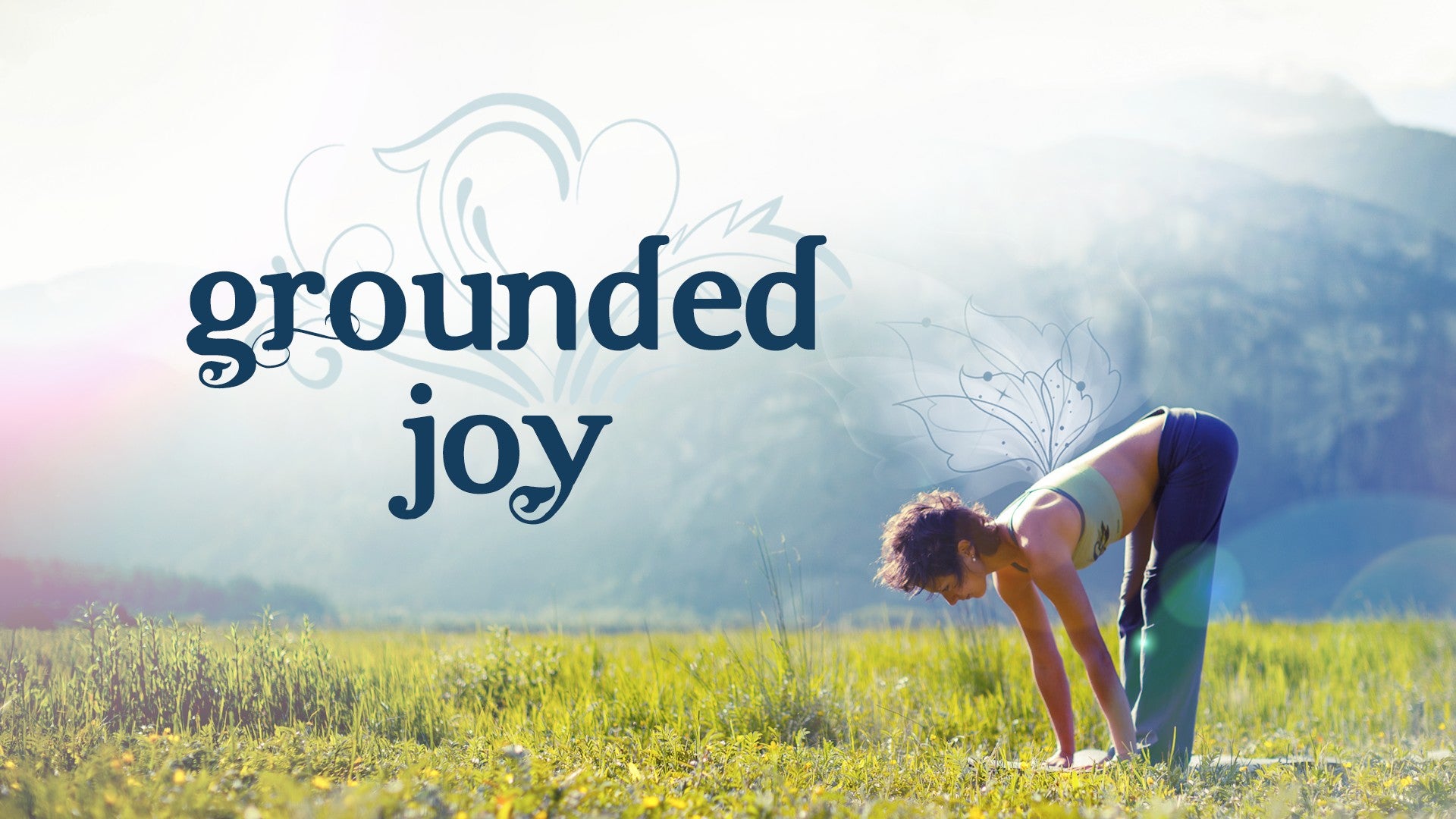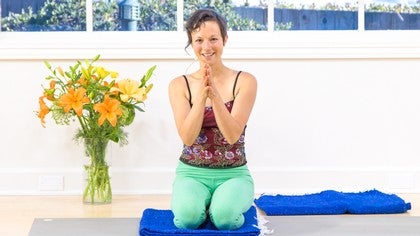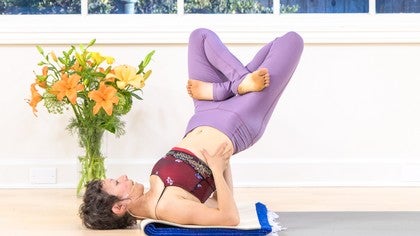Description
About This Video
Transcript
Read Full Transcript
(water swooshing) Hi. This is a really short shoulderstand tip session. So just a couple of things that are really useful if you're going to stay in shoulderstand for a little bit of a longer hold. Use blankets. So, you only have one neck.
So, you can use one blanket or two, depending-- like you can play around with it depending on how much height you want so that the demand of this action, having the flexion of your neck is lessened with the blankets which you'll see when we go into the shoulderstand practice. Make sure your blankets or blanket, that they don't have too many wrinkles in them. So, there are some schools where they are like triple Virgos on this, (chuckles) like really, really intense and detail-oriented about no wrinkles in your blankets but there is a point there that if there's a bunch of wrinkles in your blankets there might be a little assymetry in your shoulders and we don't really want that on the neck and shoulders. So, once you have your blanket or blankets down, I'm just gonna show with one, because the blanket's surface is often kind of slippery, it's pretty important to roll your mat over top of the blanket like this. If you don't want your head, 'cause your head is gonna go on the floor on a really hard surface, you could even put like a towel or a thin blanket without any height, like one layer, here.
Not thick like this, like one layer. Because the edges of your shoulders will go on the sticky mat and your head is gonna go on the floor. I'll just show you that setup. The reason why it's so important to have a sticky mat is because if there's any tightness in your pectoral area in the front of your chest, in the deep front and superficial front arm lines here your elbows are gonna wanna come apart. The more your elbows come apart the less support you have to lift your lower cervical vertebra off of the floor.
So, the wider your elbows, the more compression that's gonna happen on your neck. So, you want your elbows to be close and they'll slide apart way easier if they're on a blanket. So, the sticky mat, and I really like to have bear upper arms for the shoulderstand practice because clothing is more slippery, so there's more of a chance of your elbows starting to like come apart like that. So, this is the setup is to take the tops of the shoulders right to the edge. And so you have this, your neck is falling out of this support.
So, it's falling down to the floor. It has a lot more space for when you come up. And I'm not gonna go up now because we're gonna go up in the practice but I just wanna show you it's important. So, I often see people get in this setup and then going like this in trying to get up. This is not gonna work (laughs).
The props will be useless like that so make sure that this is happening, head is on the floor and there's this spaciousness in the back of your neck. Then you don't have to flex your neck so much. This posture, shoulderstand, supported shoulderstand, is not a neck stand it's a shoulderstand, so it's really important to use our arms so that we're not standing on our neck, especially our big, this big gumball vertebra at the base of your neck called the C7. In some older yogis that have done neck stands for a really long time, the body's really smart so if there's a lot of pressure on a joint, actually there will be an overlay of fascia to protect the joint. The body is really smart, so if there's a lot of pressure around that joint, and there's all those nerves in there, the body's gonna go, "Uh-oh," and it's gonna overlay all of this connective tissue on top of that joint and it'll result in a really big kind of hump there.
Or eventually it'll get really big if we continue to put pressure on that area. So we almost want that C7 area to be light on the touch of the mat or the floor and sometimes, in some people, if there's enough opening, it's actually off which is even better. I wanna show you something. What's counterintuitive in the shoulderstand practice is most postures, teachers are telling you take your shoulders away from your ears, soften your shoulders away from your ears, drop your shoulders. It's the opposite in this posture.
So, in this posture you wanna shrug your shoulders into the floor when you're upside down, so the movement is like this. So, if you come to kneeling, place your hands on your thighs like this, internally rotate it and press down into your thighs and let your shoulders lift up around your ears. So, you can do this and then take your chin down towards your chest. And I'm gonna turn around and show you that from here. So, first is if you didn't do that and you just allowed your shoulders to move away from your ears which is usually what you hear, and then you take your chin towards your chest you can probably see that that C7 is poking out of the skin.
And Iyengar said a beautiful thing, "Always keep the bones in the skin," so they're protected in their little cocoons. So, if you were to bring your shoulders up around your ears and then take your chin towards your chest you can probably see that little C7 goes into his home inside the body. Hopefully that's what it looks like. It's probably not accurate to be pressing on something so try that with actually using all of these muscles to lift your shoulders and shrug them into the floor which is where you're gonna be and then take your chin towards your chest. What you might try to do when you're in this position also is not jam your chin down towards your chest, which will increase flexion, but actually lift your chin a little bit which will encourage extension which will also take the vertebra in.
So, if you flex it's gonna pop out of the skin so keep the bones in the skin. If you do a little bit of a chin lift everything is gonna go in. So I know that's a lot of information but if you can take a few of those things into your shoulderstand practice you'll feel the amazing nurturing effects of this posture without having any funky stuff happening in your neck. Of course, there's many contraindications for this practice and it's not for everybody. If it's not for you, legs up the wall or legs up the wall with a bolster Viparita Karani in a certain shape is such a beautiful restorative practice so you can do that for 15 minutes a day as well.
See you in there. Namaste.






You need to be a subscriber to post a comment.
Please Log In or Create an Account to start your free trial.